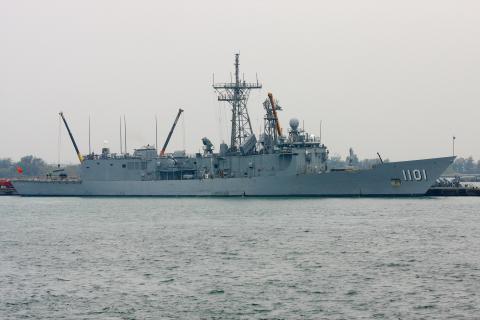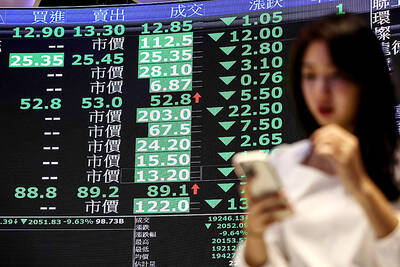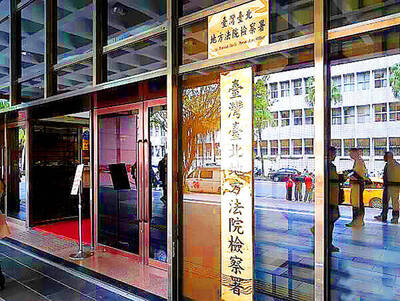A backlog of costly arms acquisitions by Taiwan could be forcing the navy to cut back on requests for frigates from the US, which threatens to exacerbate the widening tonnage gap in the Taiwan Strait as the nation decommissions ageing vessels.
Citing a Taiwanese defense industry source, Defense News said in a report published this week that the navy could request two — rather than four, as initially planned — decommissioned long-hull Oliver Hazard Perry-class frigates as excess defense articles (EDA) from the US.
The article said the plan to acquire the four frigates was cancelled late last year because of cost and technical considerations, adding that the military was struggling to pay for roughly US$18 billion in weapons released by the US in the past four years.

Photo: Jimmy Chuang, Taipei Times
Although China Shipbuilding Corp (中船) is capable of building Perry-class frigates — it has built eight so far, known locally as Cheng Kung-class — the source told Defense News that acquisitions from the US would be the quickest and least costly way to add the much-needed vessels to the navy. Building them would cost upwards of US$2 billion, the source said, much higher than the “near-scrap” price under EDA, even when refurbishment and upgrade costs are added.
The Ministry of National Defense denied there were plans to request fewer frigates from the US because of budgetary considerations and added it was in negotiations to ensure the acquisition were fully operational rather than semi-complete or empty shells.
Still, the navy will be forced to decommission aging frigates in the coming years. Its eight 3,800-tonne Knox-class frigates, acquired from the US in the 1990s after nearly 20 years of service in the US Navy, are due for replacement, but so far such plans appear to have stalled.
If replacements are not found, the navy will be down to 18 vessels with more than 3,800-tonne displacement — four Kidd-class destroyers, eight Perry-class frigates and six La Fayette-class frigates — Defense News said. This would continue a downward trend in tonnage for the navy, which went from 43 destroyers and frigates above 3,000 tonnes during the 1996 Missile Crisis, 39 in 2000 and 18 after the Knox-class frigates are taken out of service.
Plans to produce smaller vessels in the 2,000-tonne range also appear to have been cancelled due to budget problems.
Since Taiwan’s acquisition of the Knox-class frigates, the People’s Liberation Army Navy (PLAN) has commissioned a number of heavy-class destroyers and frigates, both Russian-made or domestically produced. According to Jane’s Fighting Ships 2011-2012, by next year, the PLAN could have at least 28 destroyers and frigates with displacement of more than 3,000 tonnes, with possibly more in production.
While not all of the PLAN’s combat vessels are intended for a Taiwan contingency, the balance of power at sea in the Taiwan Strait continues to shift in China’s favor, especially if no way is found to replace vessels that are due for decommissioning.
Some navy analysts, including James Holmes of the US Naval War College, have argued that rather than embark on a tonne-for-tonne race with China, Taiwan should focus its efforts and finite budgets on developing fast-attack craft such as the 170-tonne Kuang Hua VI missile boat.
So far, 31 KH-6s, divided in three squadrons, have entered service.

Intelligence agents have recorded 510,000 instances of “controversial information” being spread online by the Chinese Communist Party (CCP) so far this year, the National Security Bureau (NSB) said in a report yesterday, as it warned of artificial intelligence (AI) being employed to generate destabilizing misinformation. The bureau submitted a written report to the Legislative Yuan in preparation for National Security Bureau Director-General Tsai Ming-yen’s (蔡明彥) appearance before the Foreign Affairs and National Defense Committee today. The CCP has been using cognitive warfare to divide Taiwanese society by commenting on controversial issues such as Taiwan Semiconductor Manufacturing Co’s (TSMC, 台積電) investments in the

HELPING HAND: The steering committee of the National Stabilization Fund is expected to hold a meeting to discuss how and when to utilize the fund to help buffer the sell-off The TAIEX plunged 2,065.87 points, or 9.7 percent, to close at 19,232.35 yesterday, the highest single-day percentage loss on record, as investors braced for US President Donald Trump’s tariffs after an extended holiday weekend. Amid the pessimistic atmosphere, 945 listed companies led by large-cap stocks — including Taiwan Semiconductor Manufacturing Co (TSMC, 台積電), Hon Hai Precision Industry Co (鴻海精密) and Largan Precision Co (大立光) — fell by the daily maximum of 10 percent at the close, Taiwan Stock Exchange data showed. The number of listed companies ending limit-down set a new record, the exchange said. The TAIEX plunged by daily maxiumu in just

INVESTIGATION: The case is the latest instance of a DPP figure being implicated in an espionage network accused of allegedly leaking information to Chinese intelligence Democratic Progressive Party (DPP) member Ho Jen-chieh (何仁傑) was detained and held incommunicado yesterday on suspicion of spying for China during his tenure as assistant to then-minister of foreign affairs Joseph Wu (吳釗燮). The Taipei District Prosecutors’ Office said Ho was implicated during its investigation into alleged spying activities by former Presidential Office consultant Wu Shang-yu (吳尚雨). Prosecutors said there is reason to believe Ho breached the National Security Act (國家安全法) by leaking classified Ministry of Foreign Affairs information to Chinese intelligence. Following interrogation, prosecutors petitioned the Taipei District Court to detain Ho, citing concerns over potential collusion or tampering of evidence. The

‘COMPREHENSIVE PLAN’: Lin Chia-lung said that the government was ready to talk about a variety of issues, including investment in and purchases from the US The National Stabilization Fund (NSF) yesterday announced that it would step in to staunch stock market losses for the ninth time in the nation’s history. An NSF board meeting, originally scheduled for Monday next week, was moved to yesterday after stocks plummeted in the wake of US President Donald Trump’s announcement of 32 percent tariffs on Taiwan on Wednesday last week. Board members voted to support the stock market with the NT$500 billion (US$15.15 billion) fund, with injections of funds to begin as soon as today. The NSF in 2000 injected NT$120 billion to stabilize stocks, the most ever. The lowest amount it